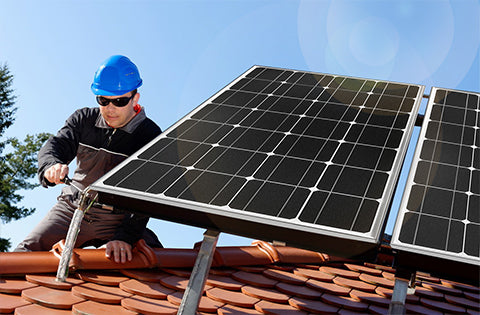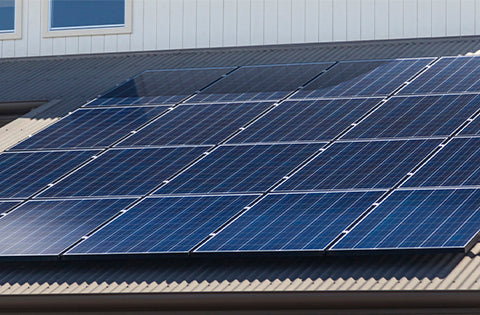Solar power is your ally in reducing your energy costs, a critical advantage you can’t overlook. To make the most of this ally, proper understanding is crucial. Solar power operates using photovoltaic (PV) technology to transform sunlight into electricity.
The captured sunlight strikes the panel’s cells, which initiates an electric current. This electric current is then harvested and used to power your home – a simple but effective system that delivers clean energy straight from the sun.
Popularity of Solar Energy
As you explore ways to decrease your monthly utility bills, there’s no doubt you’ve heard of numerous homeowners transitioning to solar power.
This popularity isn’t just a passing trend. Thanks to companies like Smart Solar Energy in Salem Oregon who offer professional services, going solar has become a practical and achievable goal for many homeowners.
Professional advice and quality installations are making solar systems more accessible.
How it Works
You’re likely wondering about the real core of how solar power works at the household level. Your solar power system operates on two levels – during the day while producing electricity and at night when your home draws energy from the electrical grid.
During daylight hours, when your system generates more electricity than your house needs, excess energy goes back into the grid. At night or on cloudy days, when your system isn’t producing enough energy, you draw from the utility grid.
Common Types of Systems
As you navigate through your journey to adopting solar power, it’s essential to familiarize yourself with common types of solar systems. The main ones are grid-tied systems without batteries, grid-tied with battery backups, and off-grid systems.
Grid-tied systems are popular because they’re cost-effective and allow for energy independence while staying connected to the grid.
Those with battery backups store excess energy produced during the day for use at night or during blackouts while off-grid systems offer true independence from utility companies at a price premium.

Reducing Electricity Bills
Financial benefits start striking immediately upon installation. One principal benefit is reduced electricity bills. Your monthly expense drastically drops because sunlight – a freely available resource – powers a significant chunk or all of your energy consumption demand.
Increase Property Value
Looking ahead with an investment perspective on installing solar panels on your home facilitates an increase in property value – a route to more financial returns.
Multiple studies reveal homes fitted with solar panels often sell faster and at higher prices compared to those without.
Federal Tax Credit
Exploring incentives that reduce your setup costs leads you to one massive opportunity – Federal Tax Credit for installing solar energy systems at home.
Make sure you leverage these government incentives designed specifically to motivate the adoption of clean energy solutions like solar power – savings too good to pass up.
State and Local Incentives
On top of federal-level financial incentives, various state and local incentives exist too. Various states have solar incentives and established policies to encourage residents to embrace clean energy solutions.
Another reason for adding a sigh of relief on your path toward switching to solar power.
Less Dependence on Grid
Embracing solar energy paves the way towards less dependence on local grids – a crucial aspect that assures stability against price hikes in grid electricity over time.
It gives you control over generating part or even all of your required electricity – separation that guarantees savings for decades after initial installation costs payback.
Reduced Carbon Footprint
By implementing domestic solar power units, households can contribute significantly towards reducing carbon footprints – saving both money and the environment simultaneously – isn’t that an enticing thought?
As volatile oil prices and carbon taxes cast heavy shadows over traditional electricity sources’ future prices, turning towards Green Energy alternatives only seems logical.
Solar-panel Lifespan
Another important element impacting decision-making is the lifecycle of solar panels – something often quoted as having a lifespan beyond 25 years.
This long-lasting foundation provides profound peace of mind and grounding for incremental ROI analysis over these years from day one.
Future Energy Costs Prediction
When you think forward about ominous raises in energy prices amid dwindling fossil fuel reserves – switching to renewables is crucial to reduce fossil fuel use.
This foresight guarantees not only considerable savings but also evades unpredictable hikes that conventional sources entail – giving you better control over future budgeting.
Necessary Preparations
Transitioning towards Solar versions isn’t an overnight flip – various considerations need addressing beforehand including the roof’s condition evaluation – retaining professional consultation ensures smooth transitions without any hidden obstacles disturbing later.
Combining with Other Renewable Sources
Here’s another convolution somewhat unexplored so far. Diversification in renewable sources. Yes – you can consider coupling solar power with other alternatives like wind or hydropower. Analyzing feasibility expands horizons while offering flexible options in sustainable living concepts.
Final Thoughts
Lastly – it’s not just about ‘energy savings’. Switching to solar power brings sustainability to your lifestyle.
It covers aspects beyond monetary savings and considers the ecological impact that is under your personal control.
As technological advancements promise even brighter prospects – it will be prudent to move to solar power to save money and the planet.
To learn more about photovoltaic power generation, please follow SOLARPARTS official website:
Twitter: Solarparts Instagram: Solarparts
Tumblr: Solarparts Pinterest: Solarparts
Facebook: Shenzhen Solarparts Inc
Email address: Philip@isolarparts.com
Homepage: www.isolarparts.com




